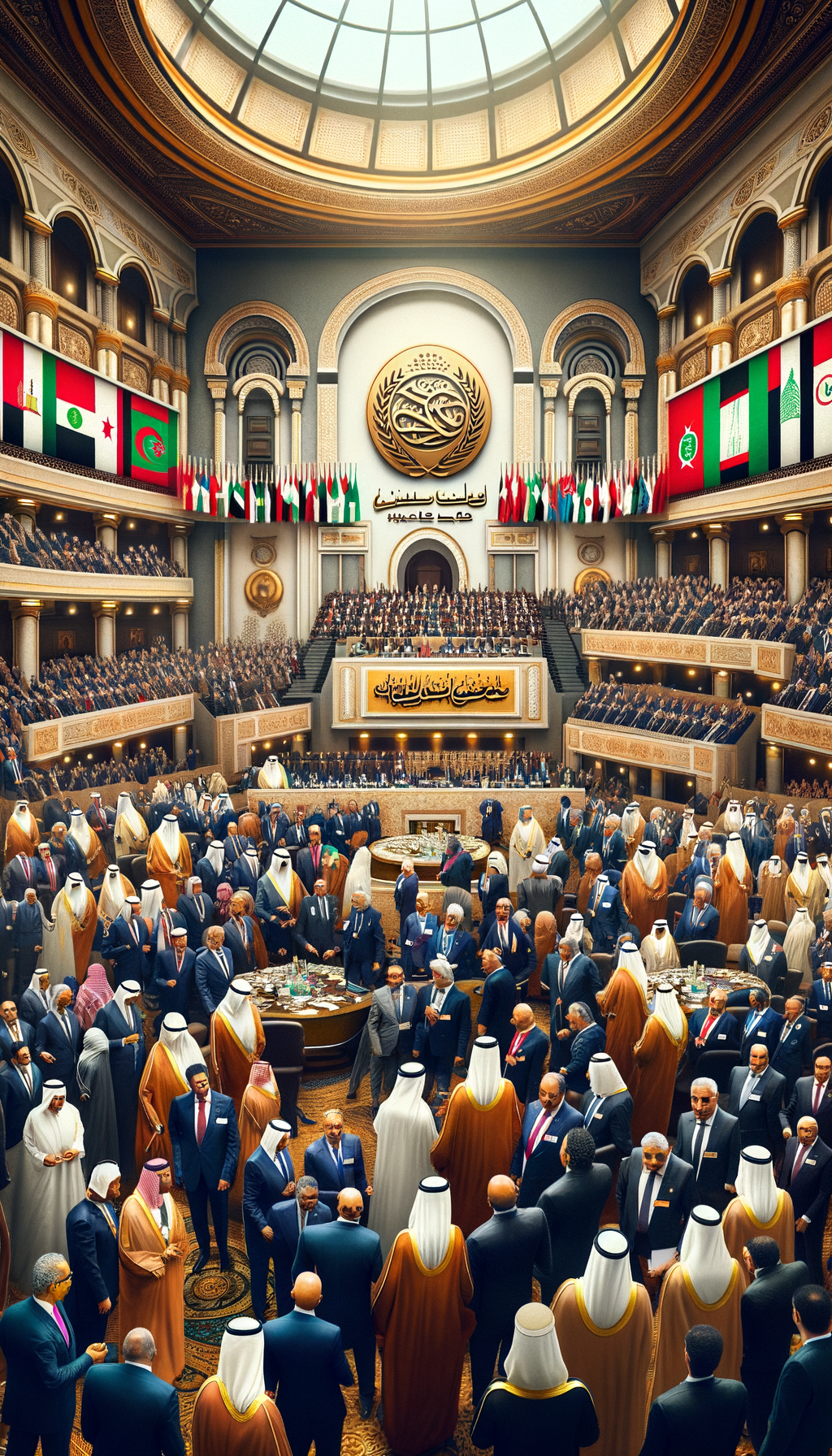Egypt – Unity in Diversity: The Birth of the Arab League – March 22, 1945
TLDR;
- Event: The Arab League was founded on March 22, 1945, in Cairo, Egypt, by seven nations: Egypt, Iraq, Transjordan, Lebanon, Saudi Arabia, Syria, and Yemen.
- Context: The formation occurred during World War II, as Arab nations sought to assert their independence and unity post-colonial rule.
- Purpose: The League aimed to promote political, economic, cultural, and social collaboration among Arab states to safeguard their sovereignty and enhance collective strength.
- Legacy: The Arab League remains a symbol of unity and cooperation, navigating regional politics and fostering development among its member states.
–
Story
In the heart of Cairo, a new chapter in history was being written. Delegates from across the Arab world gathered, their voices a tapestry of dialects and dreams, united by a singular vision: the creation of the Arab League. It was March 22, 1945, and the air was thick with anticipation and hope.

The world was still reeling from the devastation of World War II, which was still ongoing at the time, and the Middle East was a region in flux. Nations were emerging from the shadows of colonial rule, eager to assert their independence and identity. The Arab League was conceived as a beacon of unity, a platform for cooperation that transcended borders and bridged cultural divides.
The founding members—Egypt, Iraq, Transjordan, Lebanon, Saudi Arabia, Syria, and Yemen—signed the pact with a shared commitment to political, economic, cultural, and social collaboration. Their goal was clear: to safeguard their sovereignty and foster a collective strength that could withstand external pressures.
Yet, the path to unity was fraught with challenges. The League’s formation marked a turning point, a bold declaration of self-determination. But it also highlighted the complexities of regional politics, where diverse interests and historical grievances often clashed.
As the ink dried on the founding charter, the Arab League stood as a testament to the power of collaboration amidst diversity. It was a symbol of hope for a future where Arab nations could stand together, stronger and more resilient.
Today, the Arab League continues to navigate the intricate dance of diplomacy and development, its legacy a reminder of the enduring quest for unity in a world of differences.
–
| Would a different approach to unity have changed the course of the Arab League’s history? |